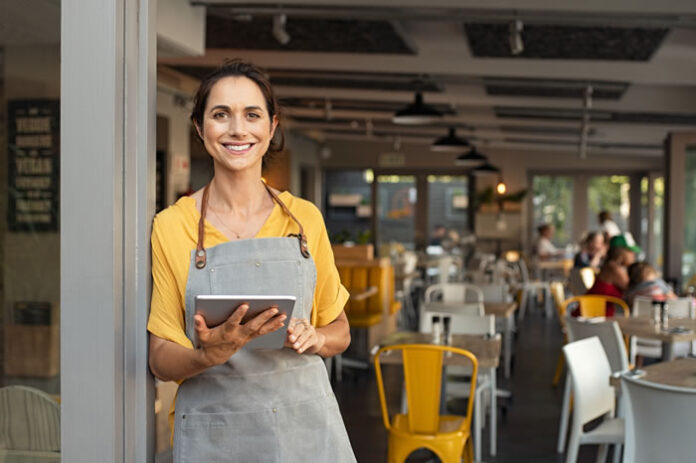Dining in restaurants provides people with functional value by satisfying hunger and offering fun entertainment and social interaction. As humans, we are social beings. Anthropologists would attribute our social needs to how we probably stayed close to each other throughout the ages to feel secure, deal with challenges and build cities and civilizations. How will the future of indoor dining together look like?
The COVID-19 pandemic and the need to slow the virus’ spread have highlighted the pervasiveness of social contact within and social relevance of nearly every sector of our lives, including employment, education, entertainment, travel, transportation, and recreation.
The pandemic took away our freedom to go out and interact with others. It forced many businesses like restaurants we relied on to socialize in, to shut down, and even close for good.
Before Covid, restaurants relied on people to show up to make money. Now, restaurant owners need to find a new way to make money and keep themselves afloat. Restaurants that found a way to keep themselves above water thrived–many were even more profitable.
With the power of technology, they offered their customers a seamless experience. When looking at how consumers use technology, it’s not just because they want to replace the physical world; they are trying to have that social connectedness when they can’t reach out and touch someone. So, for example, many people have ordered online and used home delivery services because that was the only way to have a meal, save time, or celebrate a special occasion. But it was in many ways because their preferred option of going out was not available.
Guests are not going to restaurants just because of the food. They go out to have a social experience and socialize person-to-person. They are leaping with joy to do something we have always done. In that lies an important message for the restaurant industry is to create environments worthy of social interaction and make the future of indoor dining.
The combination of pent-up desire for indoor dining and the stickiness of digital ordering habits leaves restauranteurs with a valuable opportunity to seize on customers shifting desires to increase sales through both on-and off-premise channels.
What Restaurant Owners Need to Know
Even though customers are flocking back to their restaurants for indoor dining, restaurant owners need to keep in mind that they can’t cater to customers like they did pre-pandemic. Now, people are used to their dining on-premise and off-premise experience being more convenient.
From kiosks and QR codes at the dining table to online and mobile ordering, technology played a huge role in food service during the pandemic. It will only continue to grow in the future. Online order, delivery, takeout, and other digital interactions have become the primary revenue stream for restaurants.
Digital dining experiences have grown in popularity in the past couple of years, and many restaurants owners have already adapted their operations, menus, teams, and marketing to online channels.
But many sit-down restaurants, from family-friendly to fine dining, are now leaning on online ordering for restaurants to help them set up an off-premise business forced by the pandemic.
Restaurant owners need to keep in mind that their guests need to be differentiated based on their needs. Their guests need to be segmented into buckets. Off-premise guests want a convenient experience, while on-premise guests are looking to have a social experience. Other guests fall into different pots—contactless delivery, pickup, etc. Owners need to tailor the experience for each of their segments.
Customers are ready to socialize—it is essential to create that lively environment onsite while practicing Covid protocols. For their offsite customers, owners can use the power of social media and discussion boards to stay connected to their guests.
Implementing Smart Technology to Survive
As restaurants get back to “normal,” owners need to streamline their operations while offering customers a valuable experience. Without innovative technology, restaurants are giving away 30-40% of their revenue. Now, 50% of their customers are primarily dining offsite. So, they need to take some of their strategies from onsite to online. Innovative restaurants rely on modern technology, like The Point of Sale Cloud to do just that.
The Point of Sale Cloud is a fully integrated technology platform for multi-unit restaurants. It allows restaurants to control their technology while streamlining how restauranteurs manage all aspects of their business, including customer facing transactions and back-of-the-house operations.
The technology makes the self-service side easy – it’s up and running and in sync with in-dining. Owners need to focus on their guests in their restaurant rather than babysitting online orders. The Point of Sale Cloud enables offsite functionality to be on auto-pilot—so owners can concentrate on creating valuable experiences for their guests onsite while staying connected to the ones offsite.
Although we should expect many changes within restaurants to remain permanent, it doesn’t mean they’ll ultimately affect a customer’s restaurant experience. As a response to the challenges faced by the restaurant industry during the COVID-19 pandemic, restaurant owners need a platform like the Point of Sale Cloud to assist them in deploying their own guest service experience for dine-in, delivery, pickup, etc. across a variety of channels. Most importantly, owners need to have a platform that offers a comprehensive list of back-and-front-of-the-house functionalities to ensure their restaurant stays afloat all while providing a valuable experience to their guests. This is where the future of indoor dining will be.
















